The Box and Goodies -
The box is fairly typical of what TRENDNet uses for their products. The more advanced ones have their orange background and you always get a good picture of whatever is inside. In this case the TEW-805UB adapter. You also get a QRC code that gives you access to more information and instructions about the TEW-805UB (a more and more common practice).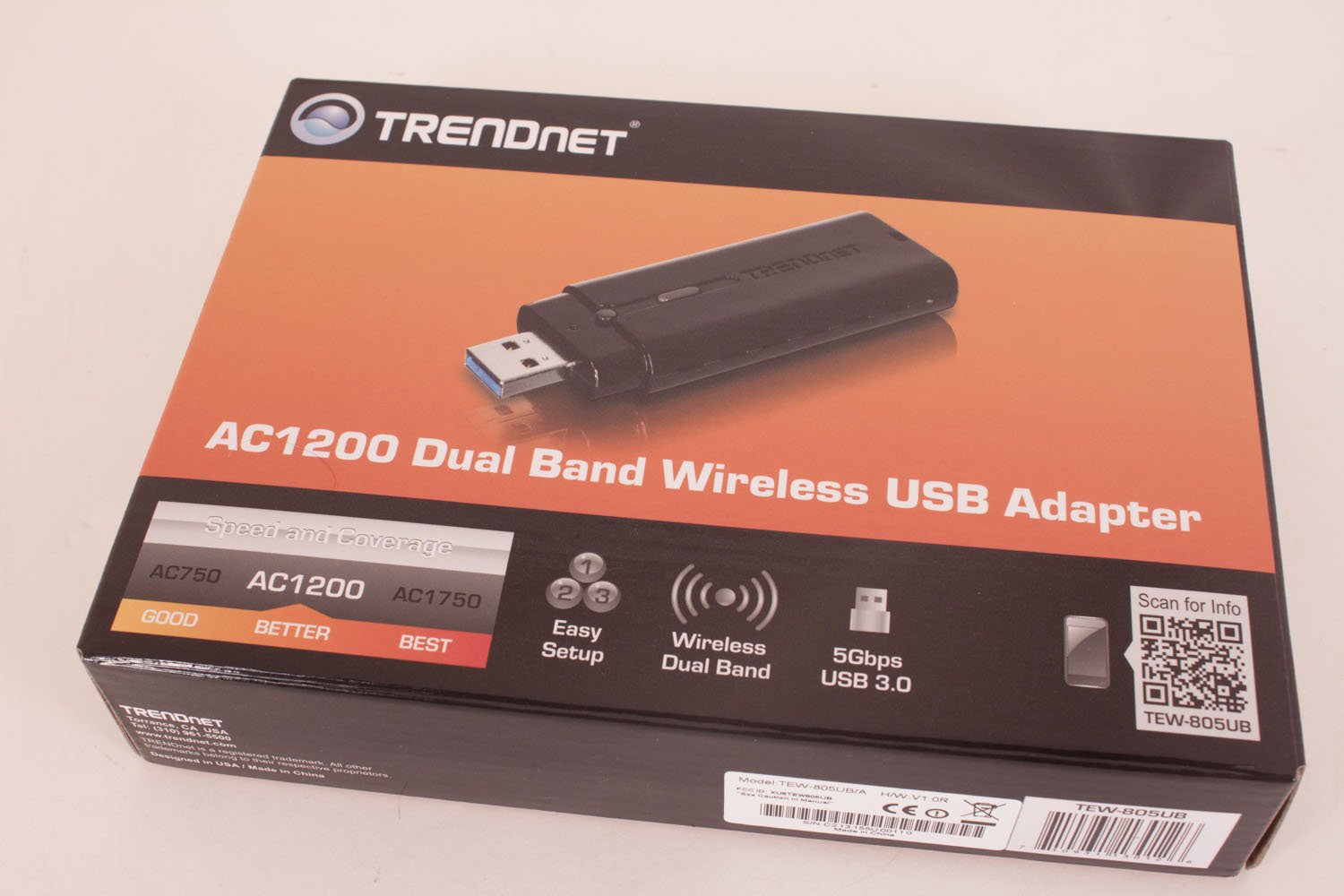
The back has the normal diagram and information about how the TEW-805UB fit into your network.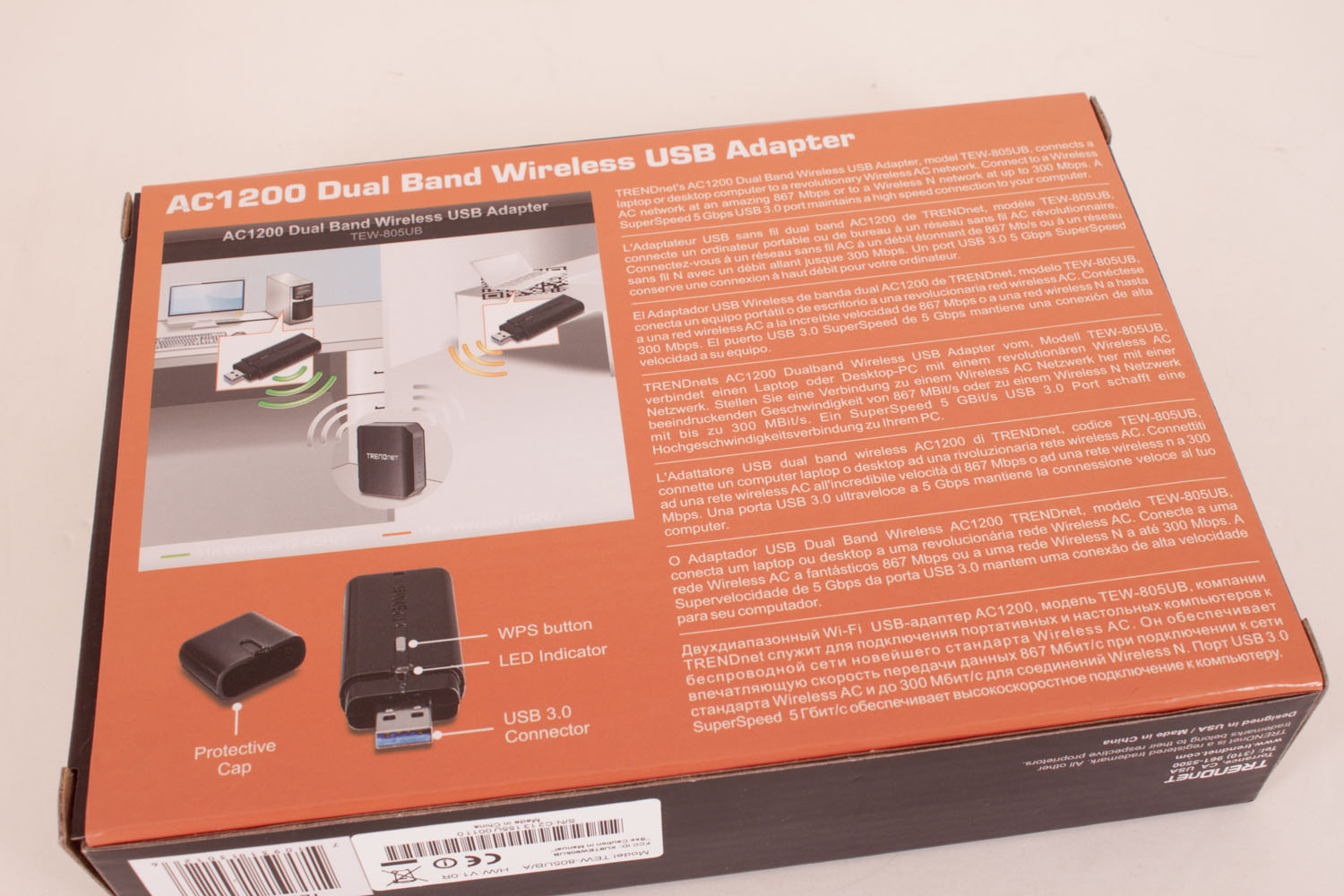
Inside there is everything you need to get started; the TEW-805UB adapter, a quick start guide and an installation CD-ROM. Well we should clarify, you have everything you need if you are running Windows 7 or earlier. For you Windows 8 guys you will have to hit up TRENDNet’s website and grab some more recent drivers to get things going.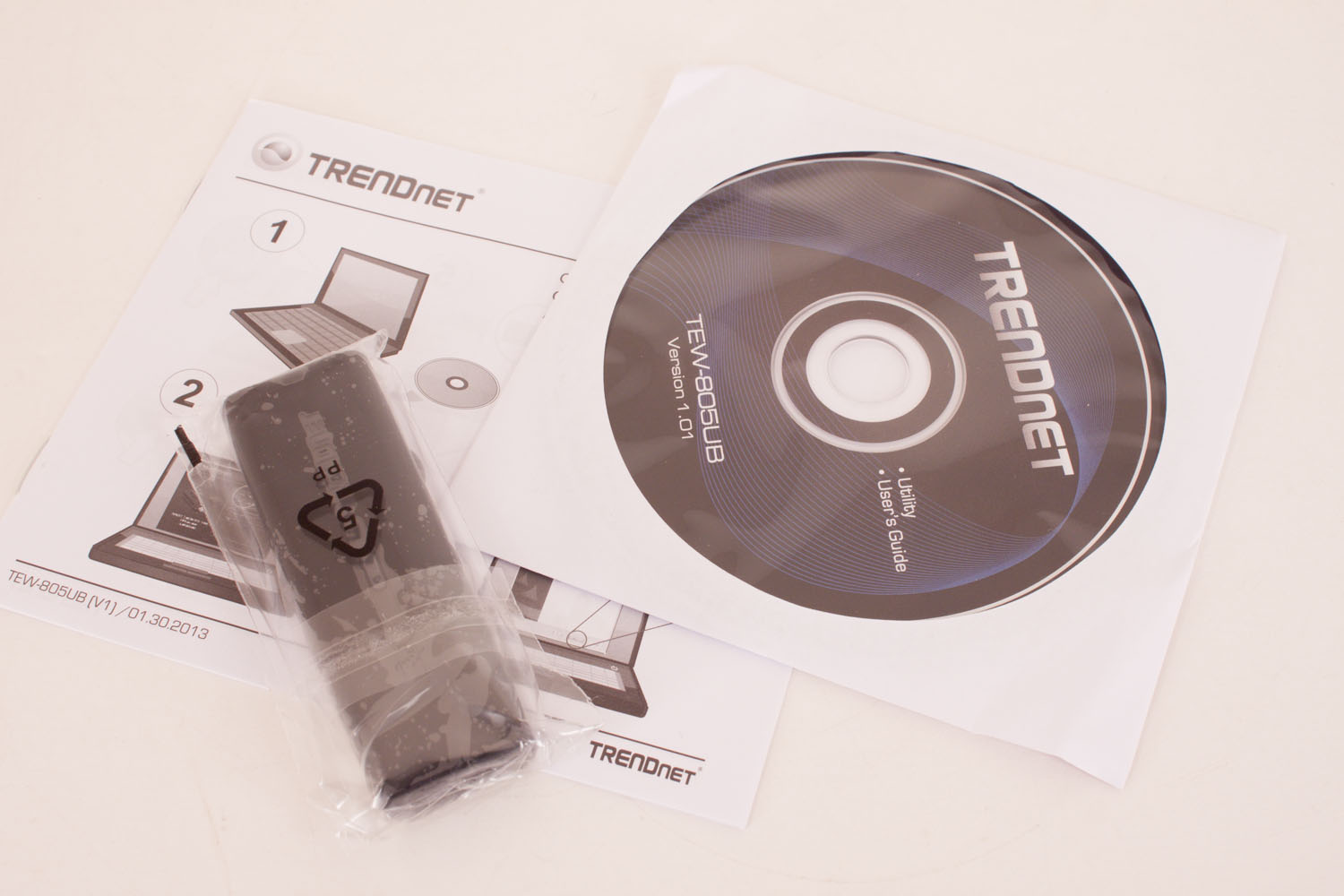
TRENDNet TEW-805UB -
The TRENDNet TEW-805UB is an AC1200 adapter. This means that you are not going to pull off the full 1300Mbps that 802.11ac has to offer, but you are going to get close (867Mbps). Inside the 805UB is Realtek RTL8812AU-VB adapter according to the hardware IDs and the MAC that the device uses. As we mentioned this is not the top of the line module and while you will get some solid speeds there are some tradeoff with this choice. One thing that TRENDNet did do to overcome these is to move away from the more common USB 2.0 connection and opt for USB 3.0. This gives the TEW-805UB more I/O bandwidth to play with (which should mean higher speeds).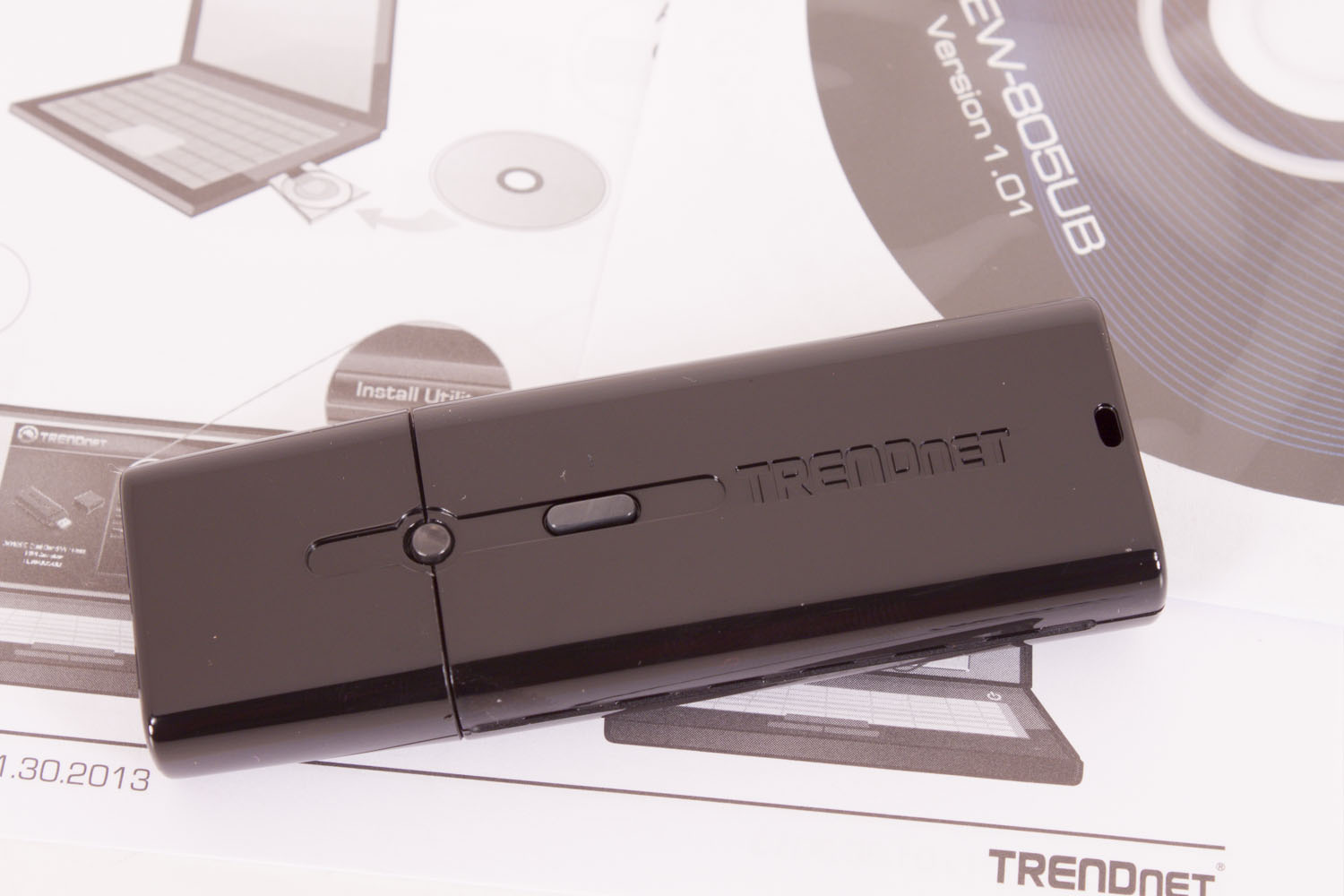
The actual adapter is pretty bulky and looks exactly like many other USB adapters from TRENDnet. Because of this bulk you might run into a few issues if you have ports that are too close together. On our Samsung Series 7 Chronos laptop the USB 3.0 ports are very close. With the TEW-805UB in place the second port is not easily used. We were able to use some very slim devices, but without an extension cable we were not using that much. TRENDNet could fix this with a short USB 3.0 extender cable. They have used USB 2.0 version of this in other adapters, but it is missing from this kit.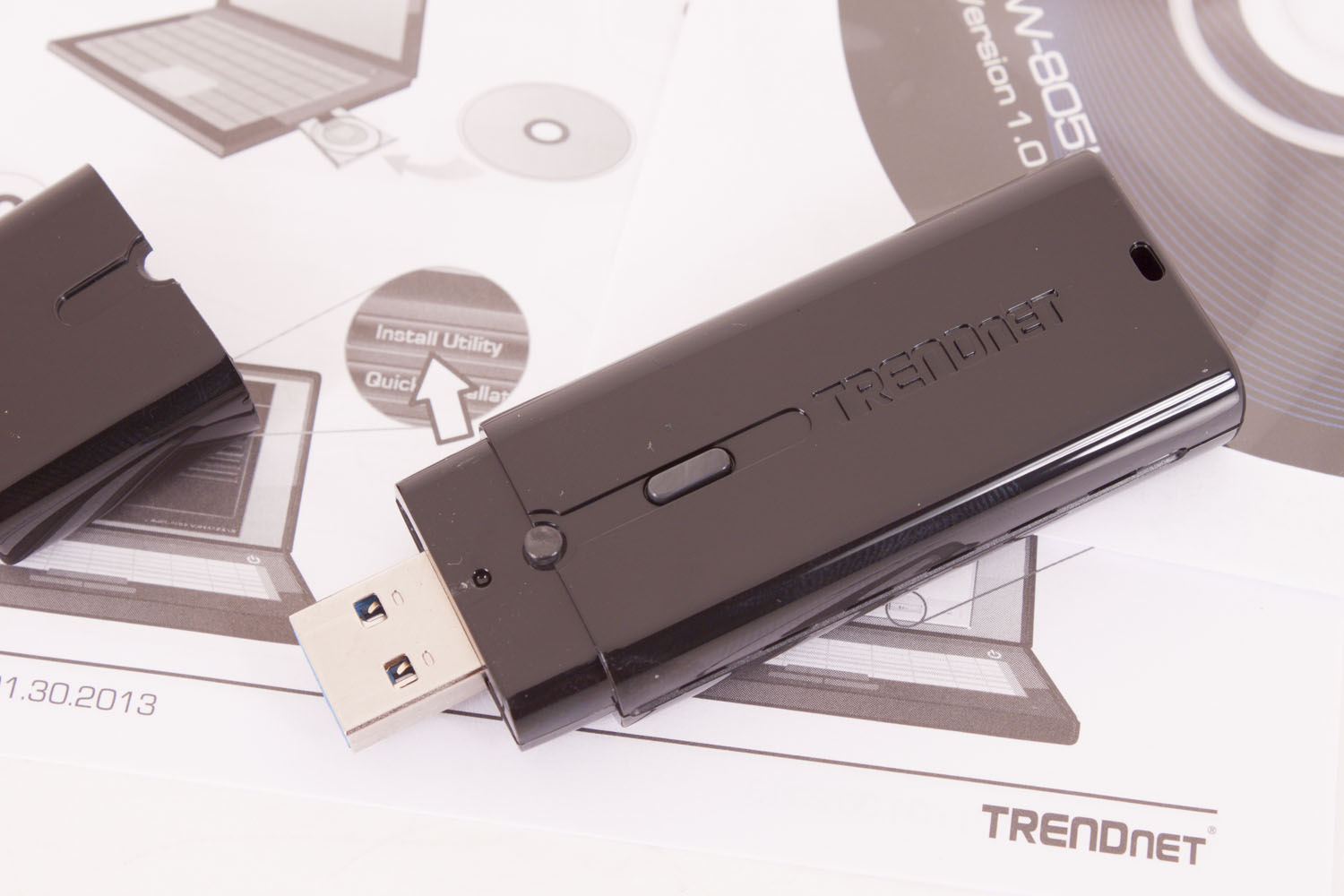
The specifications on the TEW-805UB are pretty impressive on paper. You can take a look at them, reproduced from TRENDNet’s, website below.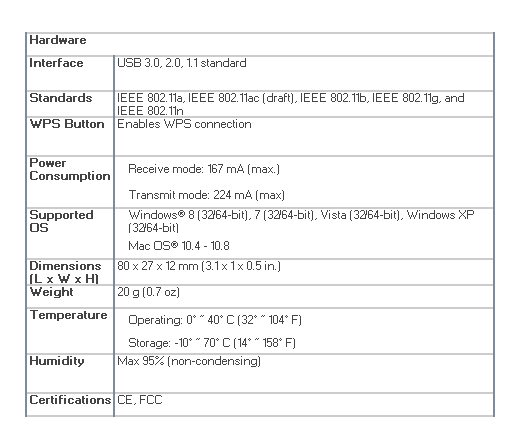
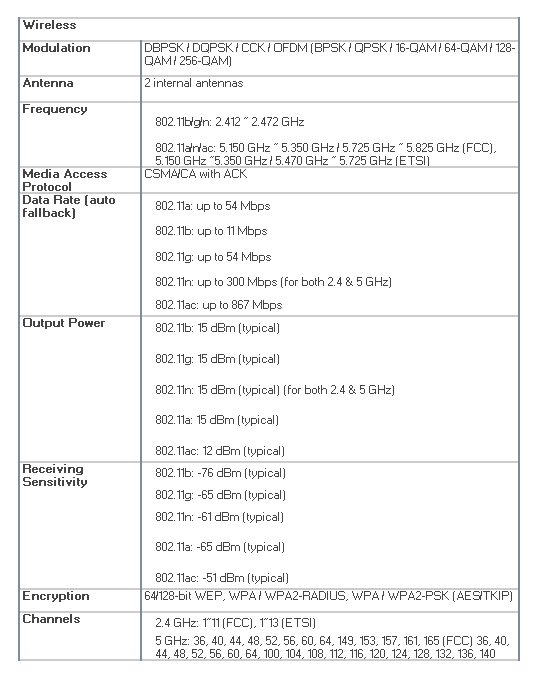
TRENDNet WiFi Station -
TRENDNet has included a software utility to help you keep things running and also to make sure that you are getting the full speed you are supposed to from your 802.11ac network. The home page is an “at a glance” view of your connection including your connection/link speed. In the picture below you can see us hitting the upper limit of 867Mbps.
The next tab covers all of the wireless networks that you have connected to and decided to save. You can also add a profile for a hidden network here if you are trying to connect to a network that is not broadcasting its SSID. Available Networks is very self-explanatory; you get a list of all of the networks that are broadcasting their SSID and are within detection range.
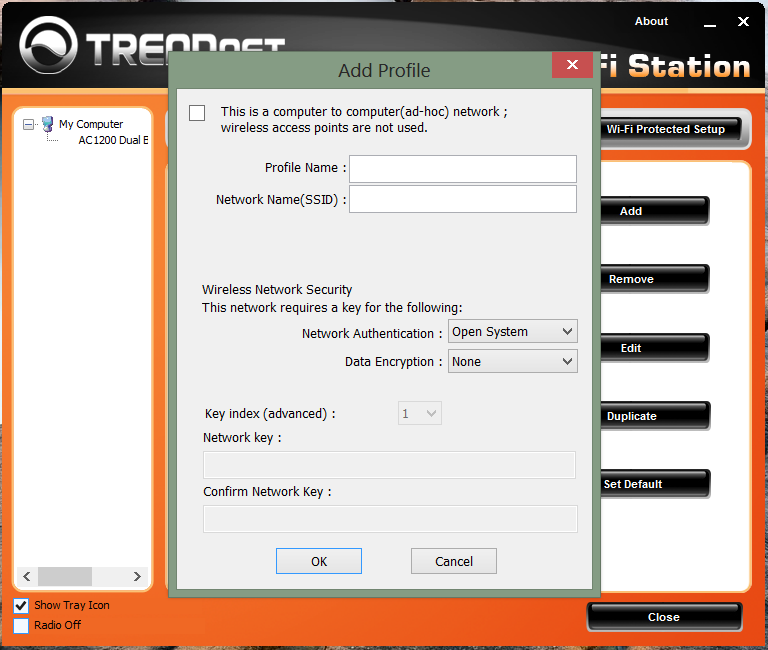 |
 |
The Status page gives you a little more detail about your setup including driver and utility versions, encryption type, channel and more. The statistics page show the amount of data that has been transmitted between the adapter and the access point.
 |
 |
The WiFi Protected Setup page is exactly what it says. It shows the WPS settings for your adapter and also allows you to begin the WPS process right from the API.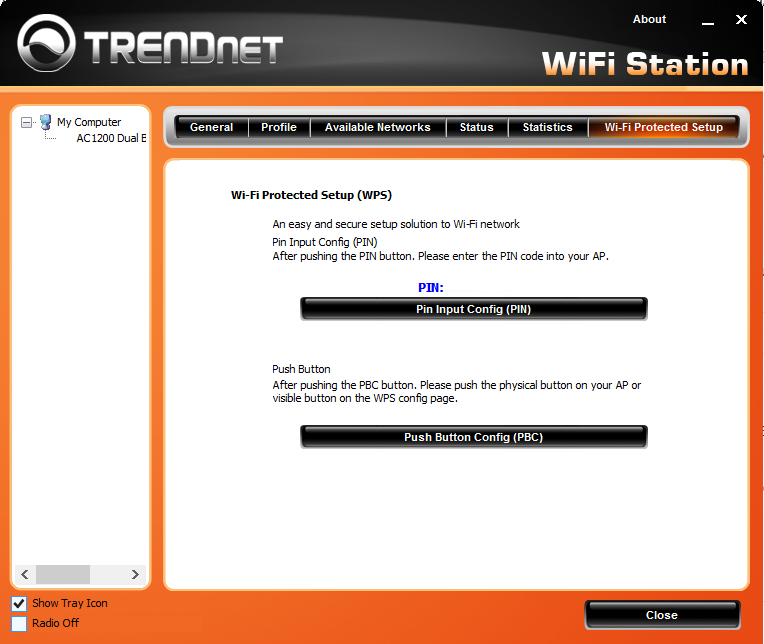
Although the App is nice, it is an extra piece of software that you have to run. The driver for the TEW-805UB did not work all that well without the utility (we have found that with other adapters as well). It would be nice if you could just install the driver and allow your OS to run the connection instead of needing to resort to an extra utility.
Performance -
We have said it before and we will say it again; you cannot count performance by numbers alone. We will always give you both the raw numbers as well as the other items that make up for how well (or not so well) a product works. These are items like how quickly a USB adapter can initialize once it is plugged in. How quickly does it connect? We take a look at all of these for the TRENDNet TEW-805UB. For testing we used a NETGEAR R6300 802.11ac Dual Band (Concurrent) Wireless Router. We connected to these at 10-feet, 45-feet, and 50-feet. The 10 and 45 foot tests were inside the house proper and the 50 foot test was outside through the Cinder Block walls. We tested the adapter using both the 2.4GHz and 5GHz band. We compared this to other adapters on the market using the same R6300 router. The results were eye opening to say the least.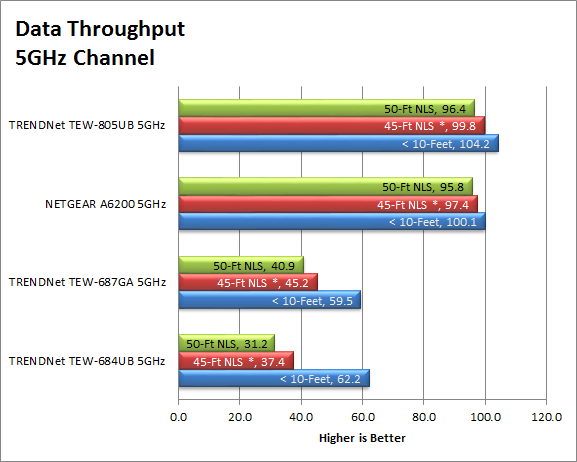 As you can see the performance between the two AC1200 adapters is very close, but the USB 3.0 adapter does have a little bit of an edge. This is not terribly surprising, as USB 3.0 has significantly more bandwidth to push information through than USB 2.0 does.
As you can see the performance between the two AC1200 adapters is very close, but the USB 3.0 adapter does have a little bit of an edge. This is not terribly surprising, as USB 3.0 has significantly more bandwidth to push information through than USB 2.0 does.
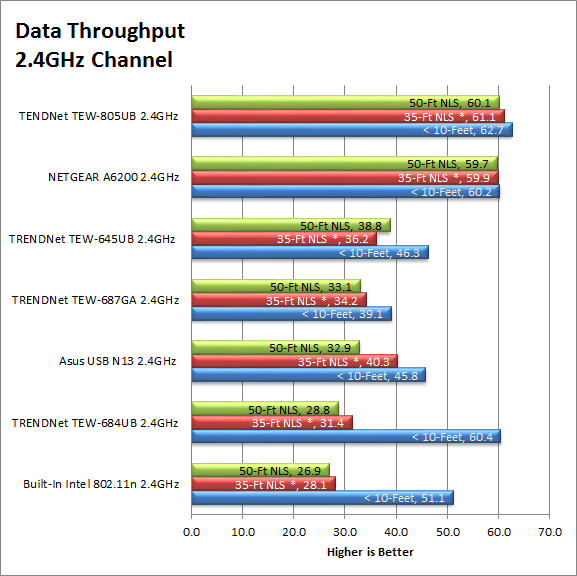
Reception –
The reception on the TEW-805UB is about what you would expect from an external adapter. You have a pair of antenna inside that help you maintain the connection whether it is 2.4GHz or 5GHz. We found our sweet spot between 5 and 40 feet where we were getting around 90-100% signal strength. Outside that radius the signal strength seemed to fall off quickly with us hitting 50% at around 60 feet.
Link Speed –
As we mentioned 2.4GHz and 5GHz will have different maximum link speeds. The max link speed displayed for our 5GHz connection was 867Mbps which is the maximum speed that the TEW-805UB is designed to run at. For our 2.4GHz connection the link speed maxed out at 450Mbps again at the top of the scale. As we pushed out farther from the mark things did drop off with an average or 195Mps for 5GHz and 79Mbps for 2.4GHz.
File Transfer -
Although benchmarks are great they are not going to tell the full story. We also like to take a look at things you will really use a network adapter for. It is important to remember that there are several pieces to the file transfer puzzle. If you try to move data between two very slow HDDs then your network speed is not going to matter at all you will be hobbled by how fast the source and target can perform. To counter this we use a USB 3.0 attached RAID box with 2 120GB SATA 3.0 SSDs in RAID 0. This gives us an upper range limit of around 1200MBps to saturate our network pipe with.
Using our external array when within 10 feet we could hit close to 100MBps. At the outer edges of the range things did drop off. Still even outside the perimeter of the lab we were still consistently moving data at around 50MBps. However once we removed the array and went with the single ADATA SSD that we installed on the Series 7 Chronos the file transfer speed maxed out at 25MBps. This is still not a bad transfer rate for a single drive over wireless.
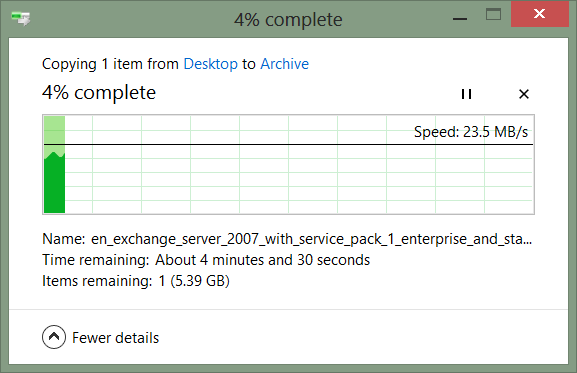
Streaming Video -
Streaming video over the TEW-805UB is excellent over Netflix, Hulu, Amazon Prime, or even from a local storage device we had no issues streaming HD video to our laptop. The video was crisp and clean with no stutters while audio was solid as well. The extra bandwidth that 802.11ac has makes it easy to pull down anything you want.
Value –
Value is another very subjective topic. What is expensive to some might be a deal to others. You can look at this topic in multiple ways. One is raw price and the other is what you get for the money. Each is accurate and both are correct ways to look at price/value. We tend to look at features, performance and real-property when we discuss value. However, we also take into account the raw cash cost of the item. TRENDNet’s TEW-805UB will set you back $46.99 from most online resellers. This is a good price point for an 802.11ac adapter. It is in line with other 802.11ac adapters although there are not that many on the market yet. As more do hit the streets we expect this price to drop even more.
Conclusion –
The TRENDNet TEW-805UB is a good adapter with a good price. It has more than enough headroom to keep data flowing (provided you have a system that can keep up). It is a little bulky and can block other ports if yours are set too close together, but with the performance it brings that can almost be overlooked. We wish that TENDNet would make their adapters a little smaller or include an extension adapter for them to keep ports clear. If you are looking to make the plunge into an 802.11ac network then you would not go wrong if you picked up one of these in addition to whatever 802.11ac router you grab. With a $47 price point it will not add too much to your bill and will make sure you get the performance you should.
Tell us what you think in our Forum